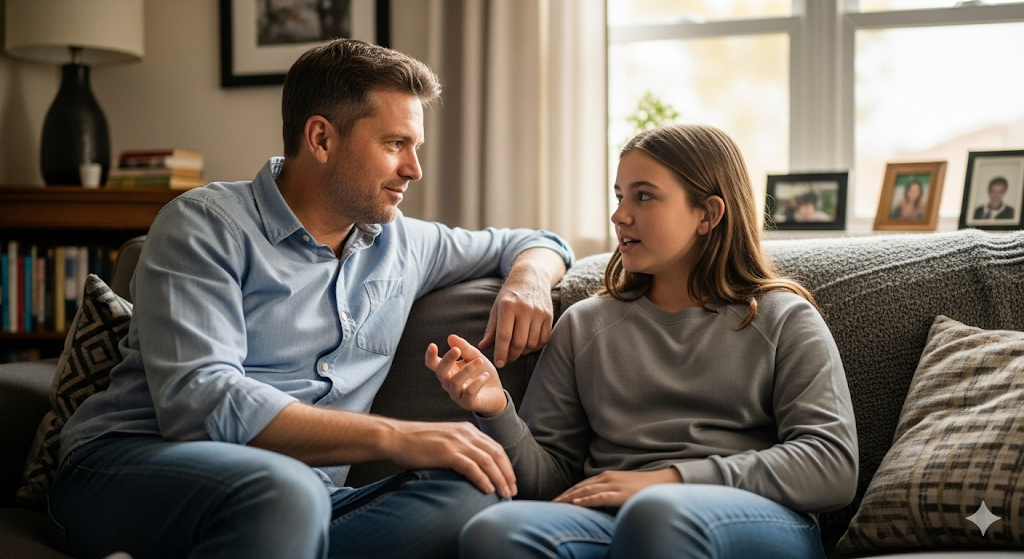Frustration is that gnawing sensation that creeps in when life doesn’t go as planned – a traffic jam on your way to an important meeting, a heated argument with a loved one, or even the endless scroll through social media highlighting everyone else’s seemingly perfect lives. It’s more than just annoyance; it’s an emotional storm that can leave you feeling powerless, irritable, and drained. As someone who’s navigated these turbulent waters myself and helped countless others through them, I know how deeply frustration can impact your mental well-being. It builds up like pressure in a bottle, ready to explode if not addressed, leading to stress, anxiety, and even physical symptoms like headaches or insomnia. But here’s the good news: you don’t have to let it control you. In this article, we’ll explore two powerful approaches to overcoming frustration – the LOWER method and mindfulness – and dive into their differences, helping you choose the right tool for your emotional toolkit. Whether you’re dealing with workplace woes or personal setbacks, understanding these methods can transform your frustration into fuel for growth.
By the end, you’ll not only grasp how these techniques work but also feel empowered to apply them in real-time. We’ll break it down step by step, focusing on the raw emotions you might be feeling right now, and provide practical insights to ease that inner turmoil. Let’s start by unpacking what frustration really is and why it hits so hard.
Understanding Frustration: The Emotional Rollercoaster
Frustration isn’t just a fleeting emotion; it’s a complex response rooted in unmet expectations and perceived obstacles. Imagine you’re pouring your heart into a project at work, only for it to be dismissed in a meeting – that sting of disappointment mixed with anger? That’s frustration in action. Psychologically, it stems from the brain’s reward system being thwarted, triggering a fight-or-flight response that can make you feel trapped or helpless. According to experts at the American Psychological Association, chronic frustration can lead to heightened stress levels, contributing to issues like depression or burnout if left unchecked.
Readers often describe it as a heavy weight on their chest, making everyday tasks feel insurmountable. You might snap at a colleague, withdraw from family, or even question your self-worth. This emotional buildup isn’t just uncomfortable; it erodes relationships and productivity. But what if there were structured ways to dismantle it? Enter the LOWER method and mindfulness – two strategies that promise relief, yet they operate in distinctly different ways. While mindfulness encourages present-moment awareness to observe frustration without judgment, the LOWER method provides a proactive, step-by-step formula to label, process, and resolve it. Let’s compare them head-on.
What is the LOWER Method?
The LOWER method is a practical, five-step framework designed specifically for handling frustration, drawing from cognitive behavioral principles to turn emotional chaos into actionable clarity. Developed as a tool for everyday challenges, it’s outlined in detail on That’s Frustrating, a resource dedicated to frustration management. Unlike vague advice to “just breathe,” LOWER gives you a clear roadmap: Label, Own, Wait, Explore, and Resolve. It’s particularly effective for those who feel overwhelmed by frustration’s intensity, offering a structured way to regain control.
This method shines in high-stakes situations where emotions run hot, like family disputes or financial stress. For instance, if money issues are piling up – bills arriving faster than your paycheck – LOWER helps you dissect the feeling without spiraling. It’s not about suppressing frustration but transforming it, much like the exercises in Building Frustration Tolerance – Exercises That Work, which complements LOWER by building long-term resilience.
What is Mindfulness?
Mindfulness, on the other hand, is a broader practice rooted in ancient Buddhist traditions but popularized in modern psychology for stress reduction. It involves paying deliberate attention to the present moment, observing thoughts and feelings without attachment or reaction. Think of it as watching clouds pass in the sky – your frustration is just one cloud, not the entire storm. Resources like Harvard Health Publishing emphasize its benefits for emotional regulation, showing how it can lower cortisol levels and improve focus.
In the context of frustration, mindfulness invites you to sit with the emotion, noticing how it manifests in your body – perhaps a tightness in your shoulders or a racing heart – without trying to fix it immediately. It’s less about steps and more about cultivation, often through meditation or breathing exercises. While effective for ongoing stress, it might feel passive if you’re in the throes of acute frustration, like when a child’s tantrum tests your last nerve.
Key Differences Between LOWER and Mindfulness for Overcoming Frustration
At first glance, LOWER and mindfulness might seem similar – both aim to manage emotional distress – but their approaches diverge significantly. Mindfulness is observational and acceptance-based, encouraging you to witness frustration as it arises, which can be incredibly soothing for chronic, low-level irritations. It’s like a gentle wave washing over rocks, smoothing edges over time. LOWER, however, is action-oriented and sequential, providing a toolkit to actively dismantle frustration in the moment. This makes LOWER ideal for acute episodes where you need quick resolution, while mindfulness excels in building overall emotional awareness.
Emotionally, if frustration leaves you feeling stuck and reactive – lashing out or shutting down – LOWER’s structure can feel like a lifeline, guiding you from chaos to calm. Mindfulness, conversely, might appeal if you prefer introspection, helping you detach from the emotion’s grip. A study from Mayo Clinic highlights mindfulness’s role in reducing reactivity, but LOWER adds the “resolve” element, pushing for positive outcomes. Ultimately, the choice depends on your frustration’s flavor: explosive and immediate? Go LOWER. Simmering and pervasive? Try mindfulness. Many find blending them – using mindfulness during LOWER’s “Wait” step – creates a powerful hybrid.
Diving Deep into the LOWER Method: A Step-by-Step Guide
To truly appreciate LOWER’s edge over mindfulness for targeted frustration relief, let’s walk through each step. Remember, this isn’t abstract theory; it’s a hands-on process to address the raw emotions you’re feeling right now.
Step 1: Label – “That’s Frustrating When”
The first step is to label the situation objectively, using the phrase “that’s frustrating when” to detach slightly from the emotion. This creates emotional distance, preventing overwhelm. For example, if a coworker interrupts you constantly, say aloud or in your mind: “That’s frustrating when someone cuts me off mid-sentence.” This simple act acknowledges the trigger without blame, reducing the intensity. It’s like naming a monster to make it less scary – suddenly, your frustration feels manageable, not monstrous.
Step 2: Own – “I Feel Frustrated When”
Transitioning from the frustrating situation, now own the feeling personally with “I feel frustrated when.” This shifts focus inward, owning your emotional response rather than externalizing it. From the labeling example, you might say: “I feel frustrated when I’m interrupted because it makes me feel unheard.” This ownership fosters self-compassion, a key to emotional intelligence. It’s a bridge from external chaos to internal empowerment, helping you recognize that while you can’t control others, you can control your response. This step is crucial for readers drowning in frustration’s emotional flood, as it validates your feelings without judgment.
Step 3: Wait – Pause Before Reacting
Here, LOWER introduces a deliberate pause – a moment to breathe and let the initial surge subside. Unlike mindfulness’s ongoing awareness, this is a tactical break, perhaps counting to ten or stepping away. In that family argument, waiting prevents regrettable words, allowing clarity to emerge. This step buys time, turning impulsive reactions into thoughtful responses, and it’s where mindfulness techniques can integrate seamlessly for deeper calm.
Step 4: Explore – Uncover Alternatives
Now, explore options with curiosity. LOWER encourages brainstorming multiple ways to respond, expanding your perspective. Here are four practical suggestions:
- Reframe the Situation: Ask, “What’s another way to view this?” If traffic frustrates you, reframe it as time for a podcast, turning delay into opportunity.
- Seek Support: Talk it out with a friend or journal – externalizing helps uncover hidden insights, reducing isolation.
- Break It Down: Divide the problem into smaller parts. For financial frustration, list actionable steps like budgeting tweaks, making the issue less daunting.
- Practice Gratitude: Shift focus to positives. Amid work stress, note three things you’re thankful for, balancing the emotional scale.
These explorations transform frustration from a roadblock to a crossroads, offering paths forward.
Step 5: Resolve – Commit to Positive Action
Finally, resolve by choosing and committing to a productive response. This could mean setting boundaries with that interrupting coworker or creating a family communication plan. Resolution ensures frustration leads to growth, not stagnation – a proactive close that mindfulness often leaves open-ended.
For a quick application, check out Frustration – How to Use the LOWER Method in 60 Seconds or Less, which distills this into bite-sized practice.
FAQs: Common Questions About LOWER vs. Mindfulness
What makes LOWER better for acute frustration than mindfulness?
LOWER’s structured steps provide immediate tools for resolution, while mindfulness focuses on observation, which is great for long-term calm but may not address urgent emotional spikes.
Can I combine LOWER and mindfulness?
Absolutely! Use mindfulness during the “Wait” step to enhance awareness, creating a hybrid approach for comprehensive frustration management.
How long does it take to see results with LOWER?
Many notice relief in minutes with practice, as it’s designed for quick application in real-life scenarios.
Is mindfulness effective for all types of frustration?
It’s versatile but shines in chronic stress; for sudden bursts, LOWER’s action focus might be more direct.
Where can I learn more about building frustration tolerance?
Resources like That’s Frustrating offer exercises to strengthen your emotional resilience over time.
Closing Thoughts: Choose Your Path to Emotional Freedom
Overcoming frustration isn’t about eliminating it – that’s impossible in our imperfect world – but about navigating it with grace and wisdom. Whether you lean toward LOWER’s step-by-step empowerment or mindfulness’s serene observation, the key is starting where you are, right in the heart of that emotional storm. Experiment with both, and remember, every frustrating moment is a chance for growth. If you’re ready to dive deeper, explore That’s Frustrating for more tools. You’ve got this – transform that frustration into your superpower today.





Leave a Reply